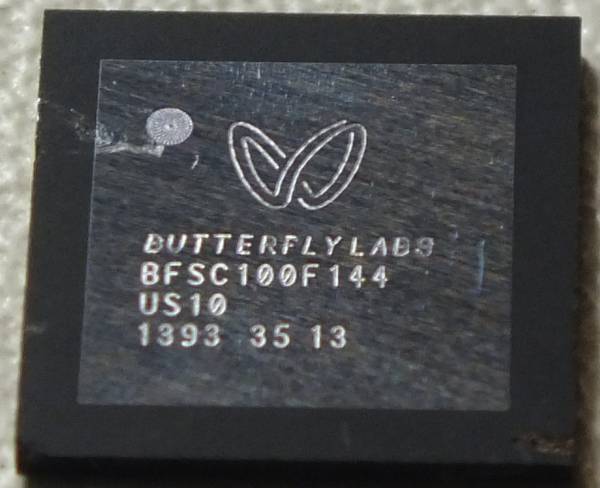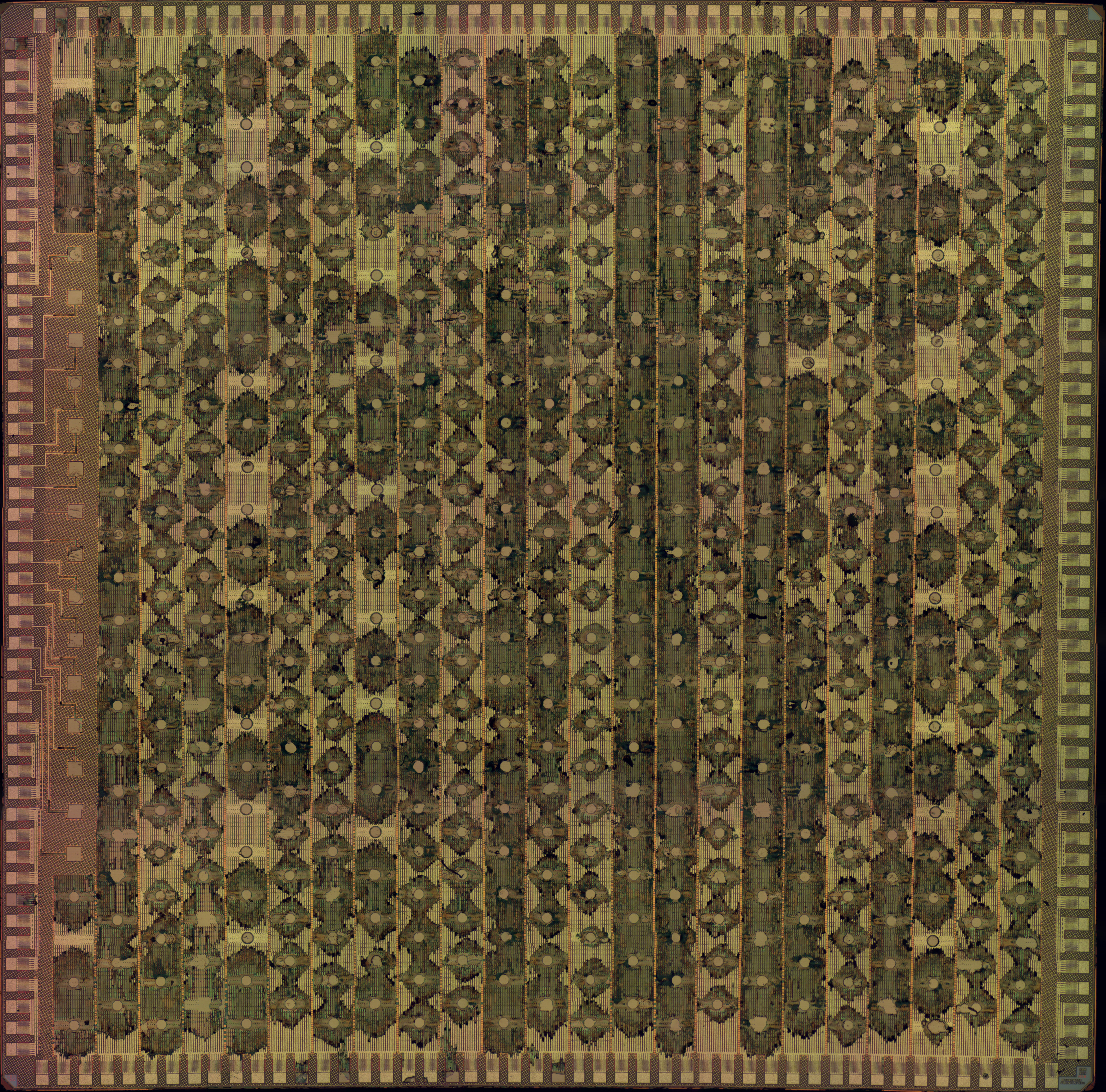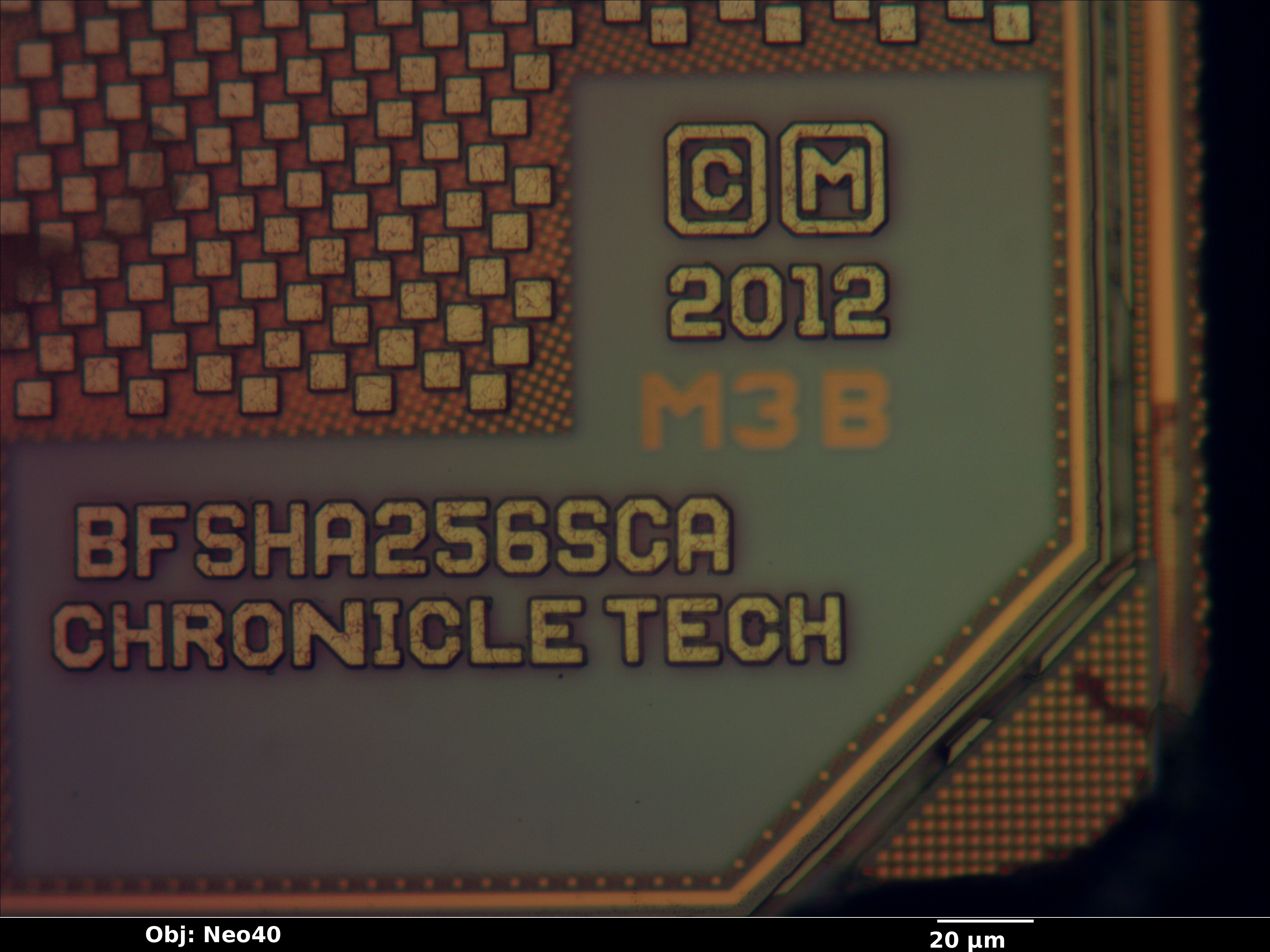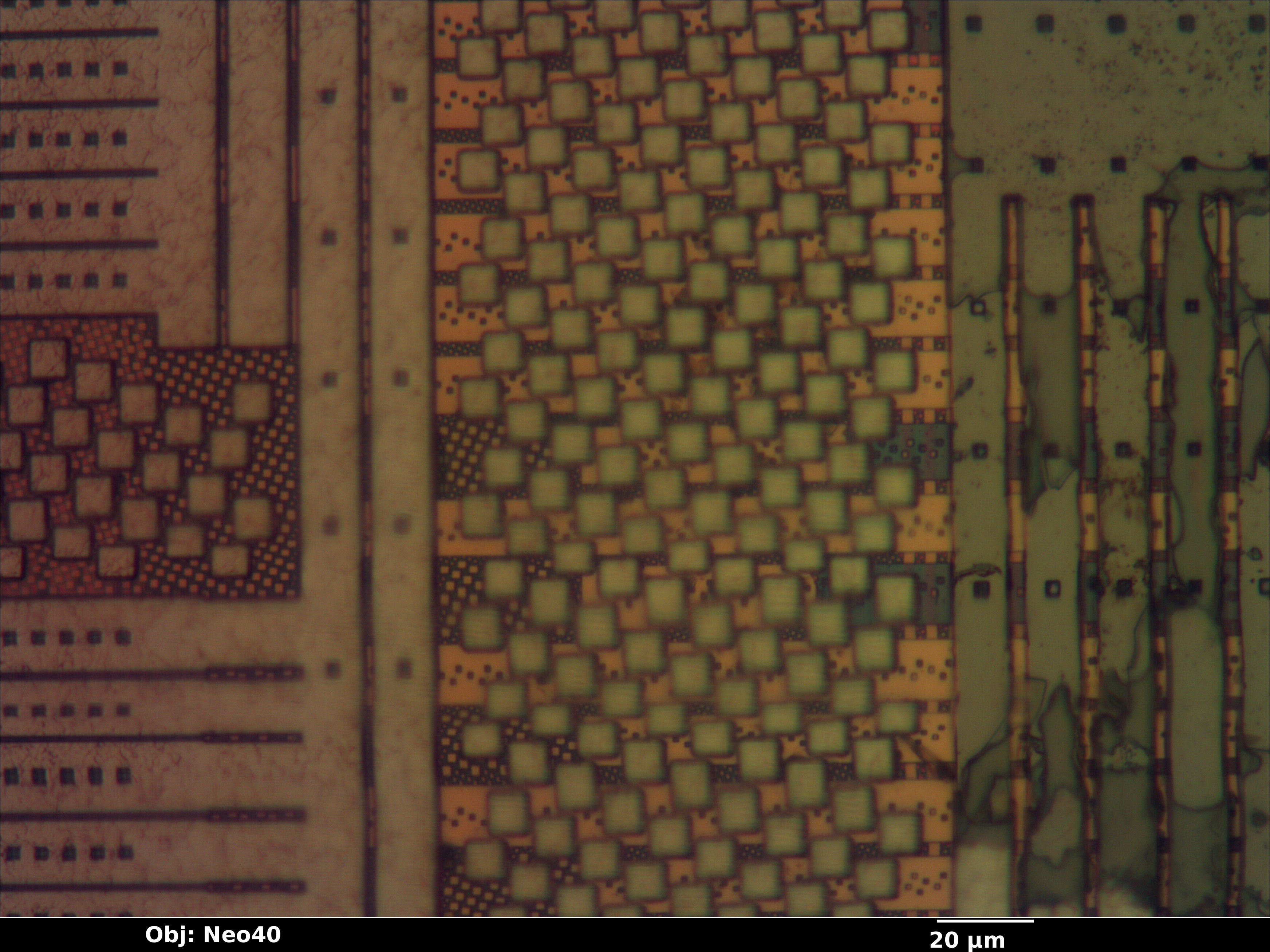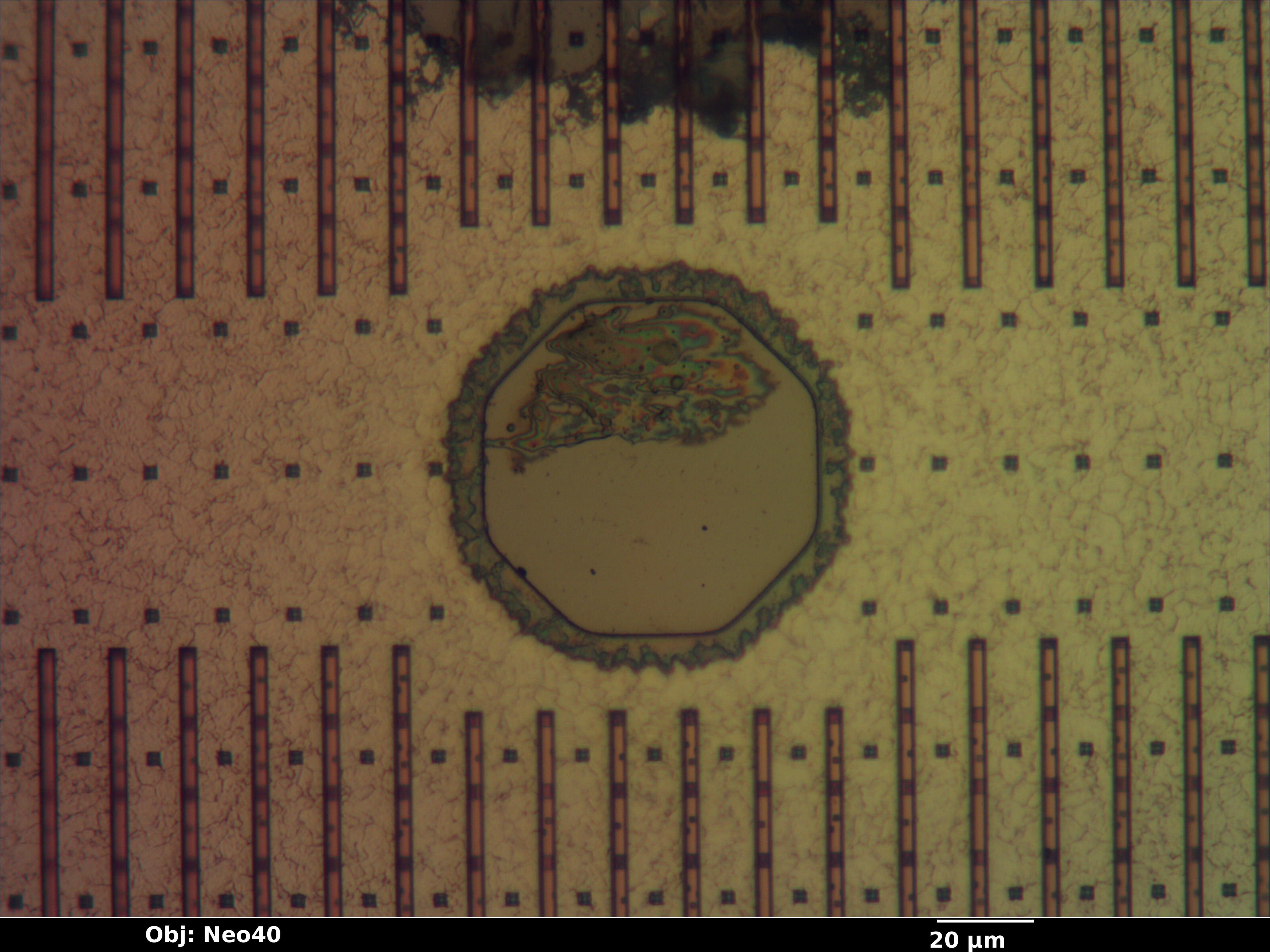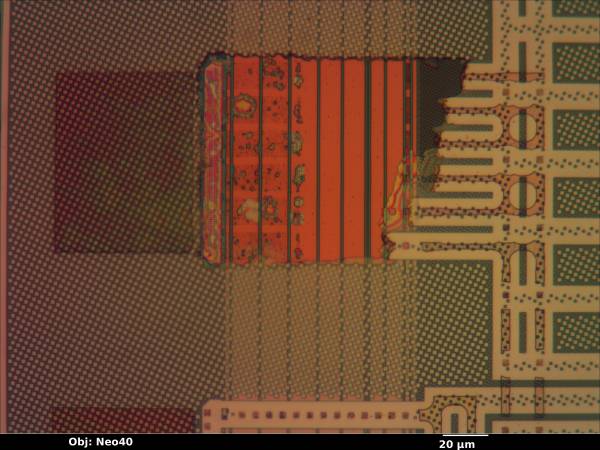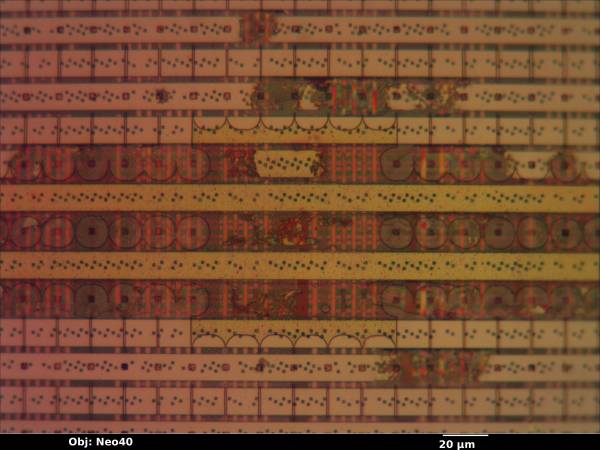Table of Contents
3 GH/s Bitcoin mining ASIC sold by Butterfly Labs.
Chip was advertised as 65 nm tech and is obviously 130 or smaller but exact dimensions are unknown until SEM analysis of lower layers is done.
Designed by Chronicle Tech (now Custom Silicon Solutions) and made by IBM, most likely on their 10SF process.
From preliminary optical views the device appears to be one thick aluminum layer on top, then several thinner copper layers. MOSIS's page on 10SF suggests that the process has four 1x layers, three 2x layers, and two 4x layers (metals used are not mentioned). Visual inspection suggests the top 4x is aluminum and remainder are copper.
Note that the die label on the bottom right is “BFSHA256SCA”. There is no BFL logo on the die at all, the only hint that this part was custom-designed for BFL is the “BF” prefix on the part number.
Board
“BUTTERFLYLABS Bitforce SC ORION Rev D - June 2013”
Not reversed in any great detail so far, focus was on the silicon.
Connected to PC via an FTDI USB-serial chip. An Atmel MCU seems to be the brain.
One unpopulated 10×10 ball BGA footprint, not entirely sure what this was for.
Lots of big high-current buck converters.
Closeup of one of the two ASIC clusters during removal of thermal pads. That's an awful lot of thermal grease!
Package
144-pin chip-scale BGA, pitch not measured but looks to be around 0.8mm. Polyimide breakout routing and one copper metalization layer over bottom side of device, top side is bare silicon with a small amount of plastic molding compound protecting the sides of the device from chipping.
Markings:
(BFL logo) BUTTERFLYLABS BFSC100F144 US10 1393 35 13
Die
Metal Z (top, vertical, EB/4x)
Dimensions are approximately 7610 μm x 7520 μm (57.22 mm2)
Overview. Note significant acid damage around bond pads.
Bottom right corner markings.
Random part of chip showing top metal and three more layers underneath before wiring becomes too dense to see.
IBM foundry logo at bottom left.
Random bond pad showing acid damage of top metal and surrounding area.
Metal Y (top-1, horizontal, EA/4x)
Metal X (top-2, vertical, B3/2x)
Metal W (top-3, horizontal, B2/2x)
TODO
Metal V (top-4, vertical, B1/2x)
TODO (details guessed from MOSIS page)
Metal U (top-5, horizontal, M4/1x)
TODO (details guessed from MOSIS page)
Metal T (top-6, vertical, M3/1x)
TODO (details guessed from MOSIS page)
Metal S (top-7, horizontal, M2/1x)
TODO (details guessed from MOSIS page)
Metal R (top-8, cells, M1/1x)
TODO (details guessed from MOSIS page)
Poly
TODO
Active
TODO


